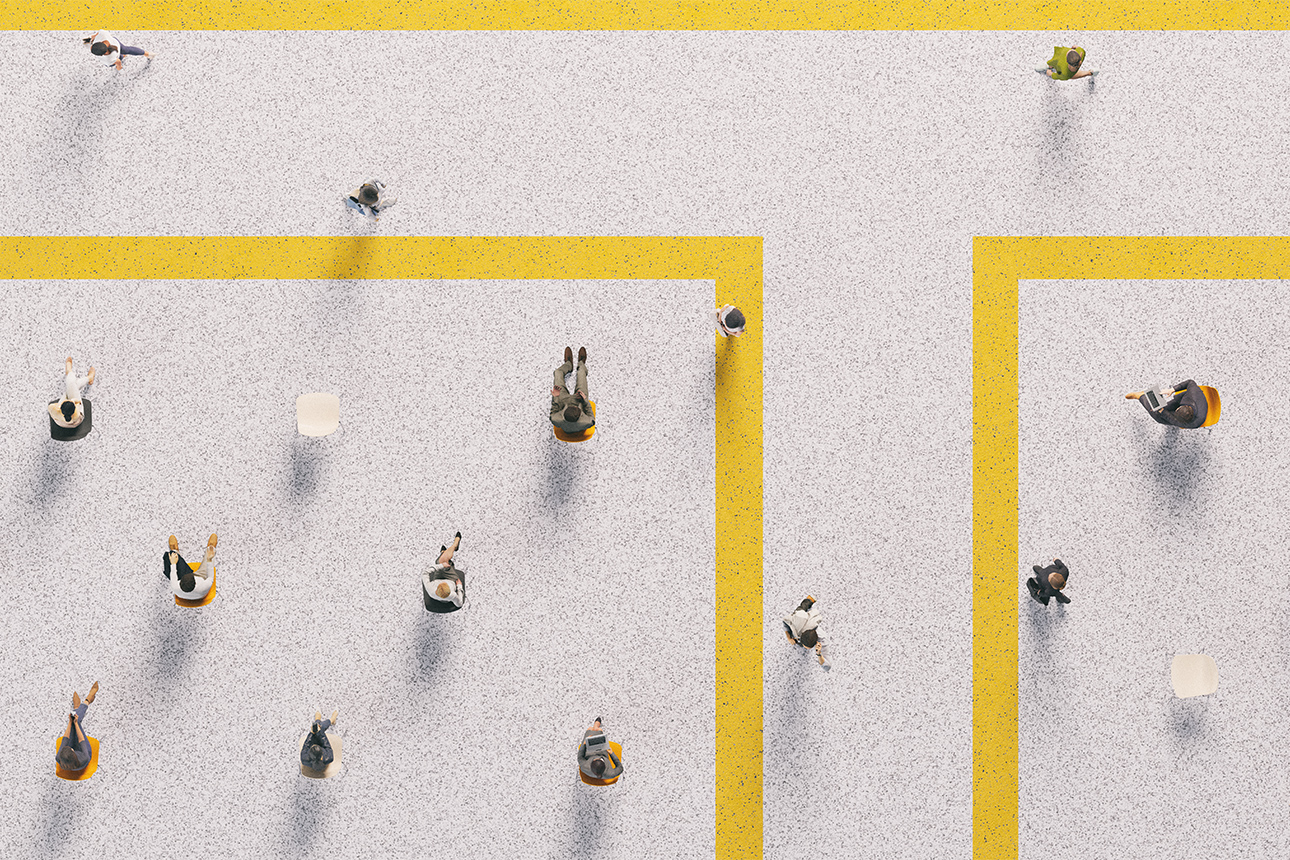
Editor’s note: Elsewhere is a column that highlights ideas from other media platforms we believe are worth your attention.
Office Space — Sized Extra Large
Remote work has become the new norm for many organizations during the COVID-19 crisis, but at some point, most companies will want to find ways to bring employees back to the office. Of course, the big question on everyone’s mind is, how do you do it in a manner that’s both workable and safe? While there’s no single solution that can apply in every situation, senior executives, designers, and logistics and medical experts are scrambling to identify the best options.
In “Our Offices Will Never Be the Same After COVID-19. Here’s What They Could Look Like” (April 13, 2020), Fast Company lays out some of the possibilities. Among them are ideas for safe workplace configurations developed by Cushman & Wakefield, the global commercial real estate services business, based on its recent work with companies in China. In addition to staggering the number of people in the space at any one time, configuring desks at least six feet apart, and covering work surfaces with disposable placemats, the plans call for setting up clear traffic patterns, with arrows on the floor, to restrict employee interactions and help control the spread of pathogens. At its own offices in Amsterdam, the company is able to monitor employee movement with electronic beacons. Cushman & Wakefield also stresses the importance of office air quality, noting that China was able to bring workers back relatively quickly because office buildings were already equipped with advanced air-filtration systems.
Reimagining Cities
With cities freed from their usual traffic congestion during pandemic lockdowns, it’s easier to imagine an urban environment that caters to pedestrians and bicyclists rather than cars. Wired reports that as more people take to the road on foot — and vie for their six-foot radius of space — urbanists see an opportunity to permanently redesign streets and open spaces to prioritize bikers, walkers, and public-transit users (“The Pandemic Could Be an Opportunity to Remake Cities,” April 13, 2020).
Cities are experimenting with a number of temporary measures. A good number have blocked selected streets to car traffic, for example, while Berlin, Bogota, and Budapest have all added more bike lanes. Public-health concerns have driven some cities to disable buttons that activate pedestrian “walk” signals, and now walkers automatically get their turn in the traffic light cycle. City planning researcher Tabitha Combs of the University of North Carolina at Chapel Hill tells Wired that by making this small change, cities have “let the cat out of the bag that it’s something they can do.” Whether these improvements stick remains to be seen.
Classes in Crisis
For a short while after the World Health Organization declared COVID-19 a global pandemic, many called the disease a “great equalizer”: It struck everywhere, and it seemed that anyone, rich or poor, was vulnerable. As the crisis has developed, its effects have been starkly unequal, with low-wage workers and poor and minority communities largely suffering the worst health and economic consequences, particularly in the U.S.
Writing in The Atlantic (“How the Coronavirus Could Create a New Working Class,” April 15, 2020), Olga Khazan explores the widening rifts between white-collar employees who easily switched to remote work and have been able to ride out the crisis from home, and those who, if they still have a job, are exposed to possible contagion at work. The experts she interviews expect a rise in populism as a result of the pandemic — but it’s unclear “whether it will be leftist populism, in the style of Sen. Bernie Sanders, or conservative populism, in the style of President Donald Trump,” Khazan writes. She suggests that if the history of past pandemics is our guide, the working class may emerge in a stronger position.
Office Space — Sized Extra Large
No comments:
Post a Comment